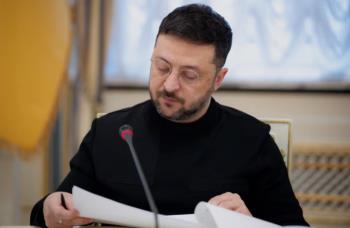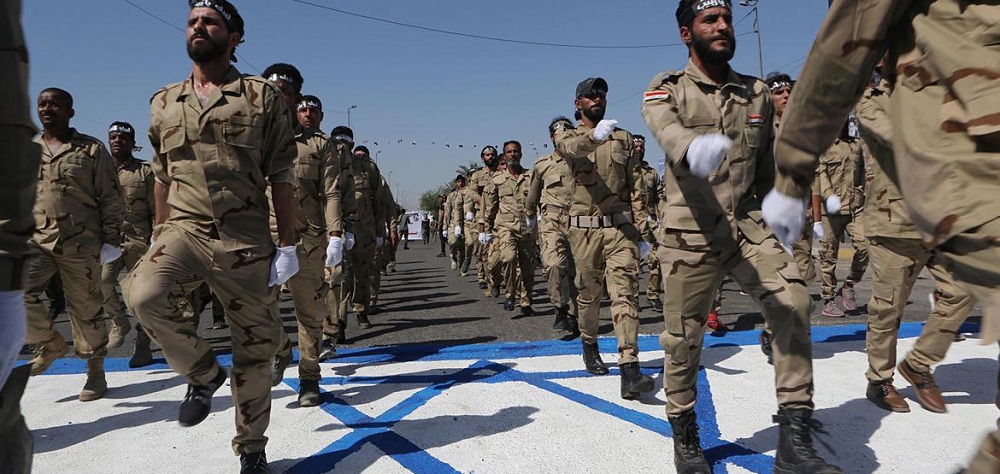Alwaght- Amid many has many challenges that Iraq is facing with- including negotiations between the political parties to reach an agreement ending the new government formation crisis, the coronavirus outbreak, and the financial difficulties caused by the oil slump- the ISIS terrorists on Saturday seized the opportunity and launched attacks on Popular Mobilization Forces (PMF) in Samara, Salahaddin province.
The PMF released a statement shortly after saying that at least 10 of its forces were killed by the attacks. It further said that the terrorist assaults continue in Mukayshefa, Tal al-Dhahab, Yathreb, Mutaybijah, and Al-Dour in Samara suburbs. It said that its forces confront them firmly and so far inflicted big human and material losses on terrorists.
The attack reflected widely inside the Iraqi society, with many people showing strong support to the PMF, also called Hashd al-Shaabi locally, in the face of the foreign-backed terrorists.
Despite the existence of some worries among the Iraqi people about the reemergence of ISIS and its underground activities across the country, what drew the attention following the ISIS attack was the confidence among the Iraqis and also Iraq’s neighbors about the capabilities of the Iraqi military and especially the PMF to defend the country against renewed terrorist raids.
A look at the heinous crimes of ISIS in Iraq, Syria, Libya, Afghanistan, East Asia, and even Europe makes it clear that the world has never seen a terrorist organization as atrocious as ISIS in its modern history with the consideration of the scale of indiscriminate criminality and violence. This knowledge about the scale of the ISIS crimes highlights the significance and the high potentials of the Iraqi voluntary forces in thwarting the plots designed by foreign powers outside Iraq to bring back insecurity and bloodshed to Iraq.
ISIS collapsed organizationally after it lost its territories to the Iraqi forces in 2017 but it did not fully lose its operational capabilities on the strength of the supports injected into its body by its foreign backers.
According to figures, the radical group carried out roughly 238 attacks in Iraq throughout 2019, targeting both the civilians and the Iraqi forces chasing its remnants. The attacks killed and wounded at least 1,058 Iraqis. Last year was not the only year witnessing deadly ISIS attacks. In 2018, the group launched 456 terrorist attacks, killing and wounding 1,742 Iraqis. These figures mean that ISIS poses a latent danger to the Arab country, though it is now far from able to launch massive and organized campaigns to seize cities as it did in 2014, the year it rose in Iraq by sweepingly seizing Mosul in Nineveh province.
Since January, when the US assassinated two influential commanders of anti-terror combat Iranian IRGC Quds Force’s Commander General Qassem Soleimani and Iraqi PMF’s Deputy Commander Abdu Mahdi al-Muhandis near Baghdad airport, the Iraqi lawmakers approved a bill calling the government to expel the foreign forces from Iraq, on top of them the US troops. The Iraqis said that the expulsion will largely cut off the US intervention in their country.
Feeling the seriousness of the Iraqis in their intention, the American strategists saw the only way to delay their expulsion in resorting to their only potential: ISIS dispersed remnants. But Washington knows that its scheme cannot work with the presence of a force that is ready to strike takfiri fighters and nip them in the bud.
It started a scenario months ago, seeking to undermine the PMF by eliminating the resistance leaders. The assassinations were part of this scenario. But this plot not only failed to weaken the Iraqi resistance fundaments but also it doubled the popular support to the PMF which grew more resolved to obliterate terrorism. The resolution to destroy terrorist groups was tested over the past years, enhancing security in the country.
Until ISIS rise in Syria in 2013, Iraq was the epicenter of regional insecurity, as no days went without media reporting deadly blasts in various parts of the West Asian country. The weakness and incapacity of the Iraq military and security forces, which were arranged by the Western invaders during the years of occupation, fully showed face with the emergence of ISIS in 2014. In February 2017, the US Center for Strategic and International Studies in a report on the terrorist attacks in the world countries from 2012 to 2017 said that Iraq ranked first with being a target to 10,000 terrorist attacks, 2,900 of them in the capital Baghdad.
A consideration of these terrorist attacks records can help figure out the significance of the establishment of a popular force by a fatwa of Grand Ayatollah Sayed Ali al-Sistani in 2014 and reaching the stability Iraq is living now. Regarding this significance brought the PMF a new big wave of public support after recent attacks by ISIS.



























